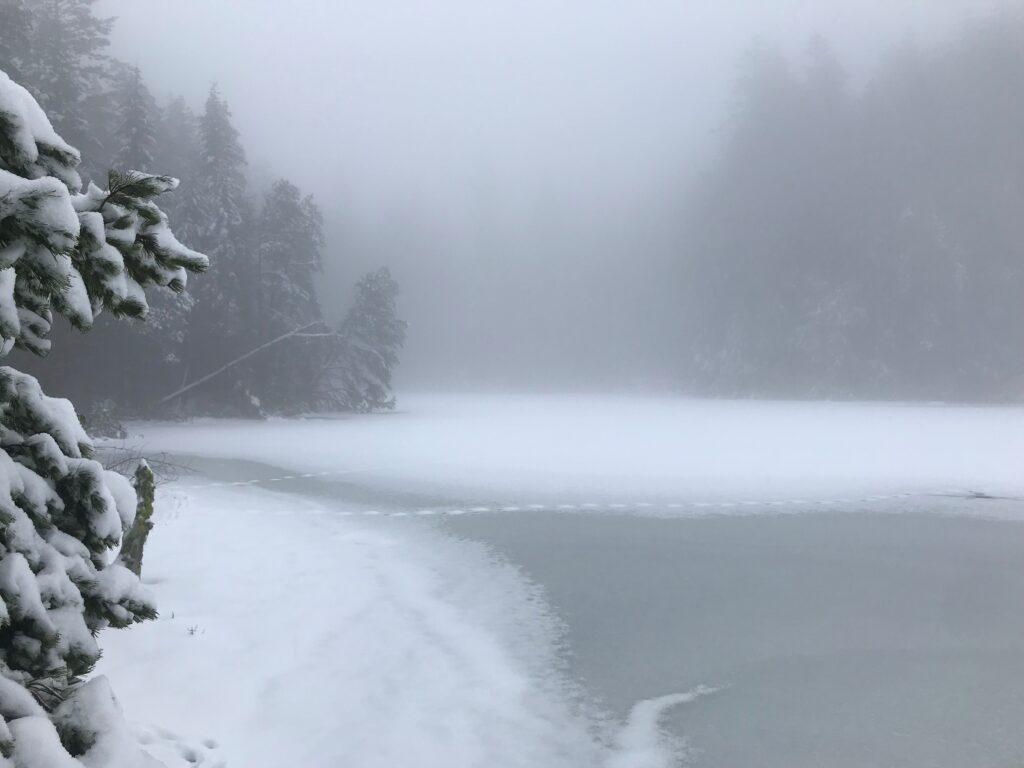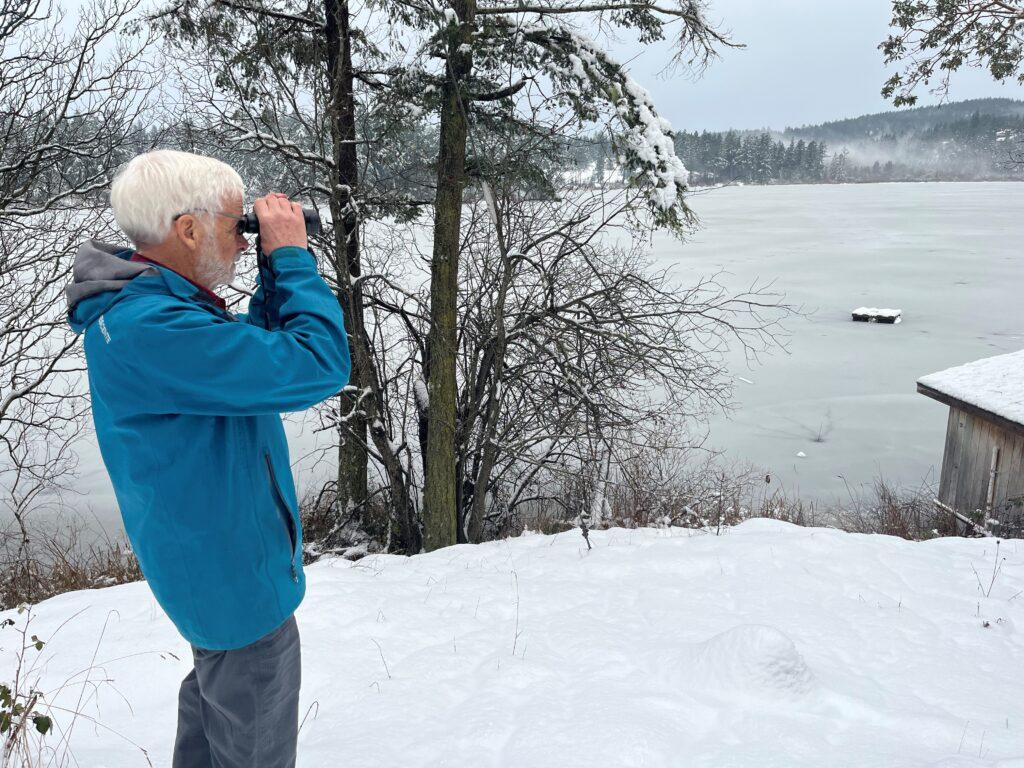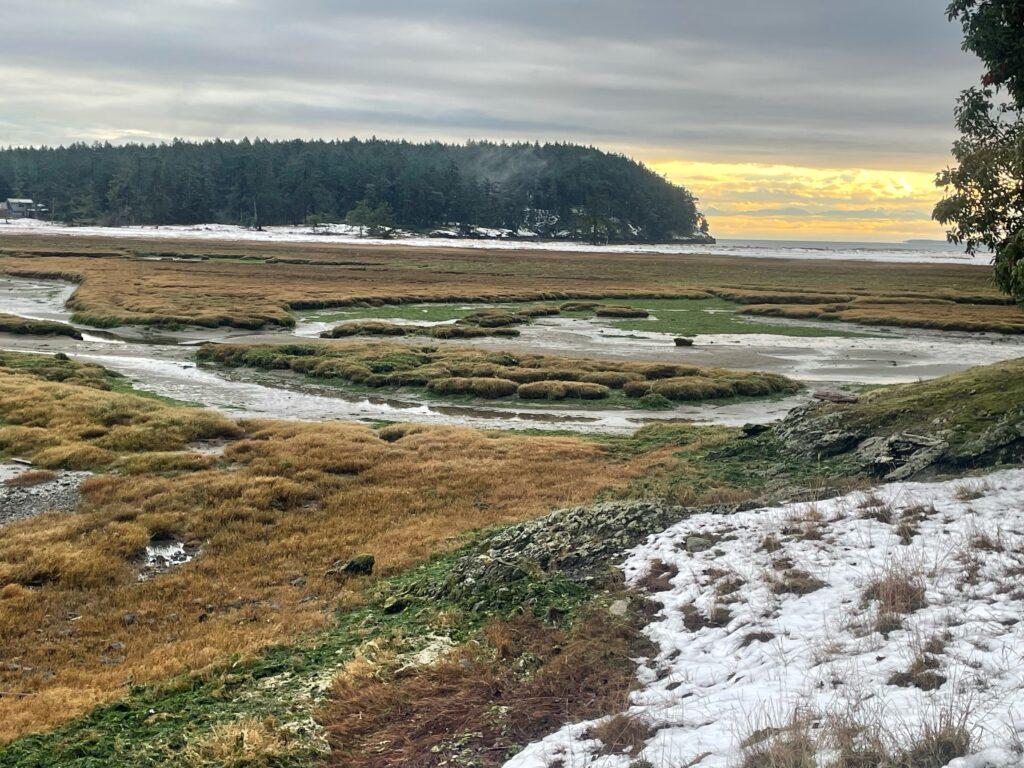
Snow and ice made for foul conditions for this year’s Swan Count | Staff Archive
Each year for the past few decades, the San Juan Preservation Trust has coordinated our county’s part in Washington’s statewide annual count of wintering swans. On the designated date—the morning of Friday, January 19, 2024—harsh winter weather fouled up the fowl count, leading to one of the lowest numbers of reported swan sightings in recent memory.
More than 50 volunteers had signed up to monitor 38 assigned territories on six islands. However, due to a large accumulation of snowfall, freezing temperatures, and icy roads in the days leading up to the count, only a hardy dozen were able to make their appointed rounds.
All told, these dozen (or so) monitors tallied 32 swans in the islands (compared with 91 last year and 65 the year before). Most of those reported this year—26 of the 32—were seen on San Juan Island, primarily at Zylstra Lake, where our volunteers observed 15 swans. For the second consecutive year, the Zylstra flock included a Tundra Swan, a rarity in the islands. Sightings also were reported at Woods Lake and Wilson Pond on San Juan Island. The only other place in the county where our monitors counted swans was Hummel Lake on Lopez Island. Six Cygnus buccinator waterfowl were seen there, including a pair of juveniles.

Volunteer Val Veirs scans for swans at Sportsman’s Lake, San Juan Island | Leslie Veirs
If there was a silver lining to this year’s swan count, it’s that seven juvenile swans were observed across the archipelago, compared to zero last year. Even with the extreme weather, it’s a hopeful sign to see swan families (not just adults) hunkering down at various locations around the San Juans.
SJPT Special Projects Director Kathleen Foley Lewis has coordinated our county’s swan count for many years. “Our numbers in the San Juan Islands were way down this year, but that was likely due mainly to the frozen-over conditions,” she says. “I suspect that a lot of ‘our’ swans just moved over to the Skagit Valley, where there were more foraging opportunities. And there’s little doubt that a smaller corps of swan counters also contributed to this year’s low reported numbers.”
In any case, Kathleen adds, “You can’t make assumptions about population status with just one year of data. Overall, the swan population has been steadily increasing over the last decade or so, regionally. Here in the islands, our numbers have remained fairly static, on average.”

Ian Tully (who took this photo) didn’t see any swans in his assigned territory on Henry Island. Even so, he said he enjoyed a calm morning looking for them.
San Juan County wasn’t alone in reporting lower numbers this year. The Washington Department of Fish and Wildlife (WDFW), which conducts the annual statewide swan count, groups our islands as part of a five-county region (Skagit, Whatcom, Snohomish, Island, San Juan). Region-wide, this year’s swan numbers were way down: 10,600 this year, compared with 16,400 last year. The winter weather played a major factor, as it’s likely that many of the usual swan “hangouts” were frozen over and waterfowl (not just swans) redistributed themselves to areas outside the region where foraging conditions were more favorable.
THANK YOU SO MUCH to everyone who signed up to participate in this year’s swan count. Even if you weren’t able to safely monitor on January 19, it’s wonderful to have your support in this work!
Want to get involved in next year’s Swan Count or another community science project? Please reach out to SJPT Volunteer and Outreach Coordinator, Jack Russillo.
Have a swan comment or question? Feel free to email Kathleen Foley Lewis at kathleen@sjpt.org.
See previous years’ results: 2023, 2022, 2021, 2020, 2019, 2018
